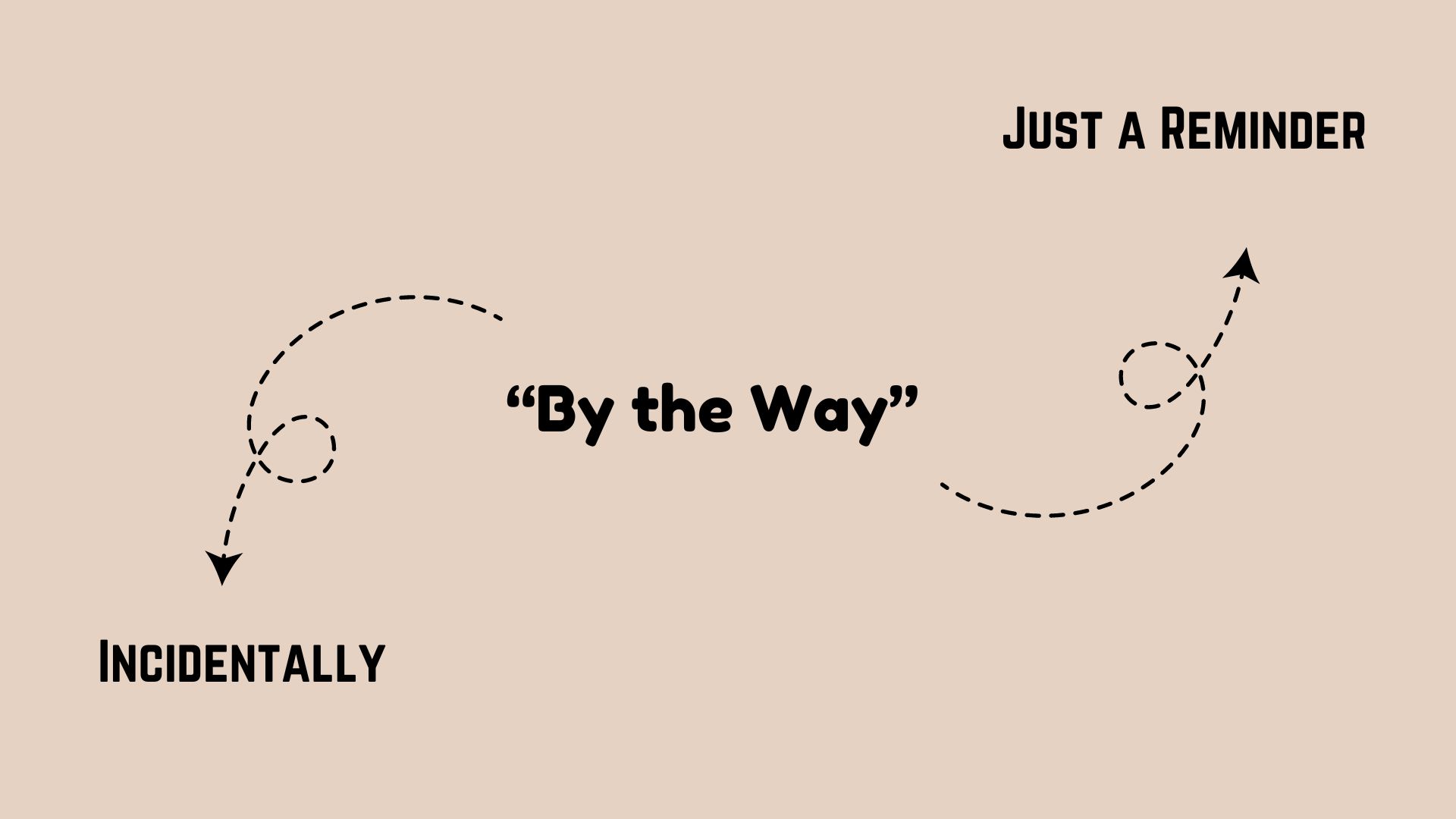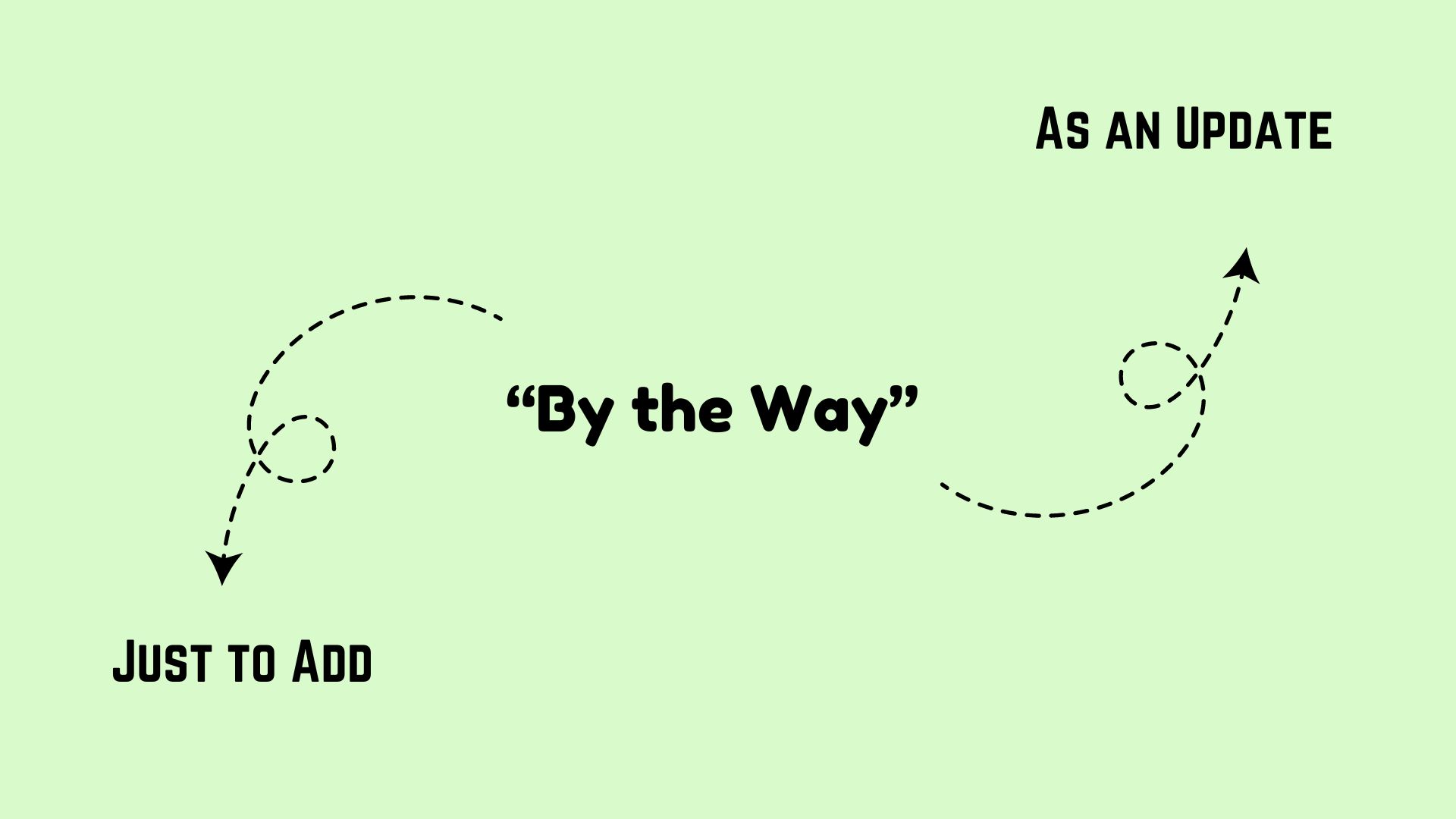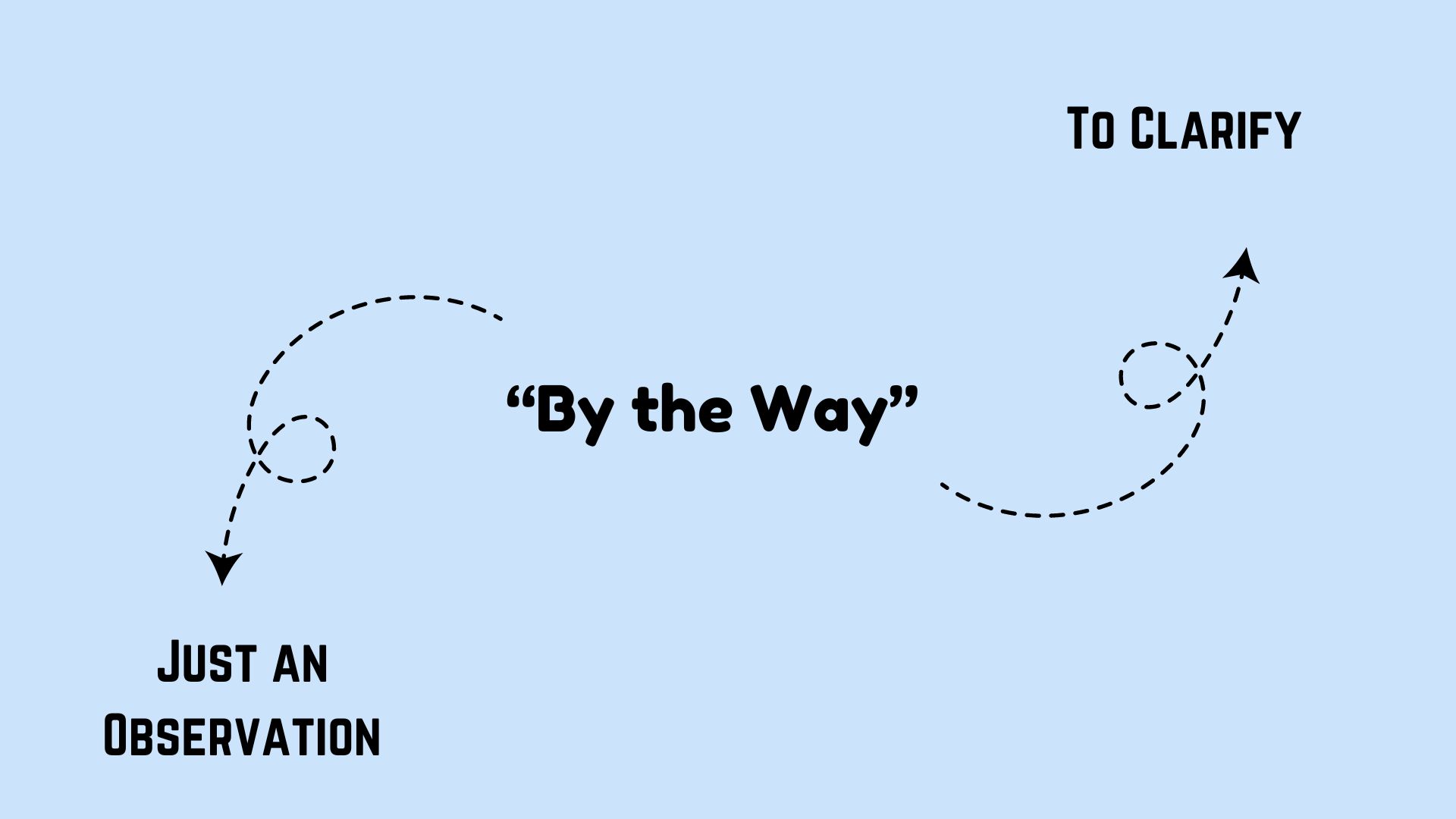In professional communication, adding information or context can enhance clarity. Here are 24 alternatives to say “by the way” in a professional context, each with an example and specific use case.
1. Additionally
Example: “Additionally, we should consider the budget implications.”
Use Case: When introducing extra information that complements the current topic.
2. Furthermore
Example: “Furthermore, the client has requested additional features.”
Use Case: When adding more detail to strengthen your point.
3. On a Related Note
Example: “On a related note, the marketing team is launching a new campaign.”
Use Case: When transitioning to a topic that connects to the current discussion.
4. As an Aside
Example: “As an aside, the team will be attending the conference next month.”
Use Case: When providing extra context that might be relevant but isn’t the main focus.
5. In Addition
Example: “In addition, we need to review the contract terms.”
Use Case: When mentioning something extra that requires attention.

6. Incidentally
Example: “Incidentally, the new software update is available now.”
Use Case: When casually introducing additional information.
7. I’d Like to Mention
Example: “I’d like to mention that the deadline is approaching quickly.”
Use Case: When highlighting an important point without making it the main focus.
8. Just a Reminder
Example: “Just a reminder, the meeting starts at 10 a.m.”
Use Case: When providing helpful information to ensure awareness.
9. While I Have You
Example: “While I have you, let me mention the upcoming deadlines.”
Use Case: When using the current conversation to introduce new information.
10. On Another Note
Example: “On another note, the budget review is scheduled for next week.”
Use Case: When changing the subject to something related but distinct.

11. As a Quick Note
Example: “As a quick note, we have new team members starting soon.”
Use Case: When providing concise updates or information.
12. Speaking of Which
Example: “Speaking of which, have you seen the latest project updates?”
Use Case: When connecting a new thought to the previous discussion.
13. As an Update
Example: “As an update, the project is on track for completion.”
Use Case: When providing new information that adds value to the conversation.
14. Just to Add
Example: “Just to add, we need to finalize the agenda before the meeting.”
Use Case: When offering supplementary information that’s relevant.
15. One More Thing
Example: “One more thing, don’t forget to review the documents before our call.”
Use Case: When introducing an important detail that might be overlooked.

16. I Should Also Mention
Example: “I should also mention that the deadline has been extended.”
Use Case: When ensuring important updates are communicated.
17. As a Side Note
Example: “As a side note, the office will be closed for the holidays.”
Use Case: When sharing additional information that may not be directly related.
18. To Clarify
Example: “To clarify, we will need your feedback by Friday.”
Use Case: When making sure everyone is on the same page regarding important details.
19. Just an Observation
Example: “Just an observation, but the team has made significant progress.”
Use Case: When providing additional context or commentary.
20. As an Important Point
Example: “As an important point, we must adhere to the new guidelines.”
Use Case: When stressing the significance of new information.

21. In Other News
Example: “In other news, the company is implementing new software.”
Use Case: When transitioning to a new topic that’s noteworthy.
22. While We’re on the Subject
Example: “While we’re on the subject, let’s discuss the next steps.”
Use Case: When keeping the conversation focused on related topics.
23. In Conclusion
Example: “In conclusion, we should follow up on the client’s requests.”
Use Case: When wrapping up a discussion while including final thoughts.
These alternatives provide a variety of professional ways to introduce additional information or shift topics, ensuring clear communication while maintaining a formal tone.

